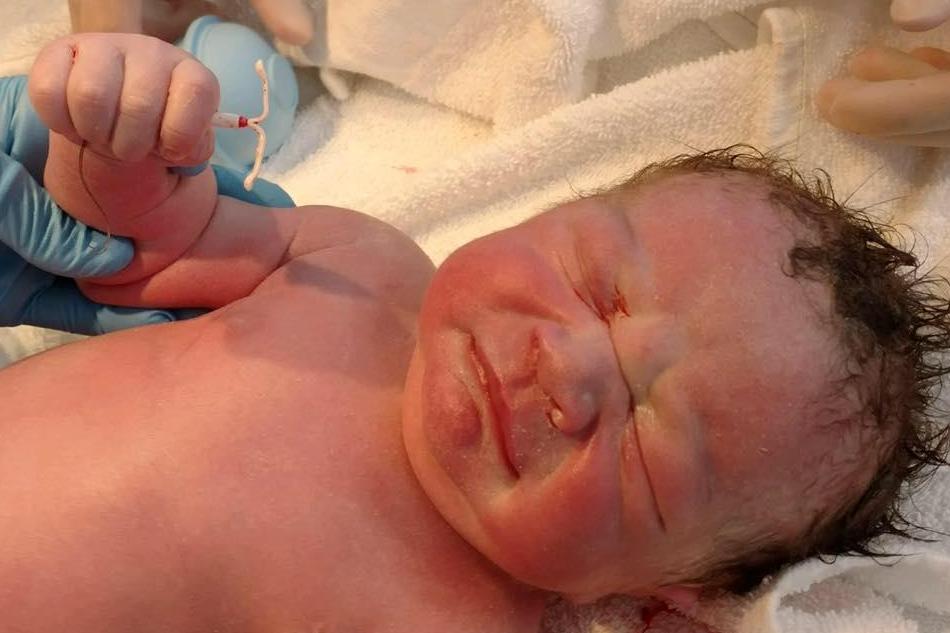Mother shares photo of baby holding coil that was meant to prevent pregnancy
Women needn't worry though as official figures reveal the device is 99 per cent effective

Your support helps us to tell the story
This election is still a dead heat, according to most polls. In a fight with such wafer-thin margins, we need reporters on the ground talking to the people Trump and Harris are courting. Your support allows us to keep sending journalists to the story.
The Independent is trusted by 27 million Americans from across the entire political spectrum every month. Unlike many other quality news outlets, we choose not to lock you out of our reporting and analysis with paywalls. But quality journalism must still be paid for.
Help us keep bring these critical stories to light. Your support makes all the difference.
A woman has shared a picture of her newborn baby holding the contraceptive coil that was supposed to stop her becoming pregnant - and it’s gone viral.
The photo, posted by mum Lucy Hellein from Alabama, has now been shared over 72,000 times on Facebook.
She gave birth to her third child, Dexter Tyler, by caesarean section and the surgeon removed her Mirena coil during the operation.
The coil is another name for an intrauterine device, or IUD.
Women shouldn’t be worried though, because NHS figures state that if implanted correctly the coil is 99 per cent effective, and fewer than one in 100 women who use an IUD will get pregnant in one year. IUDs with less copper will be less effective.
Hellein captioned her image with “Mirena fail!” but she’d previously had no problems with the coil.
“This was actually my third Mirena, my first two worked great. I had this one inserted back in August,” she told Metro. “I found out I was pregnant in December and I’ll admit I was scared because of the Mirena.
“I assumed I was only a few weeks along, but the ultrasound confirmed that I was already 18 weeks along. My Mirena was nowhere to be found on ultrasound so my OB [obstetrician] assumed that it had fallen out, but I wasn’t convinced.
“Dexter was definitely meant to be. His original due date was May 4th and even the doctor said ‘the force was strong with this one’. Although he wasn’t planned, my family and I feel incredibly blessed.”
Hellein gave birth to Dexter through a scheduled C-section after having an emergency one with one of her previous children.
The Mirena was found behind Hellein’s placenta. And after the birth she had her fallopian tube removed.
On their website, Mirena say the device is “a hormone-releasing IUD that is over 99 per cent effective at preventing pregnancy.”
The Independent has contacted Mirena for a comment but is yet to receive a response.
Join our commenting forum
Join thought-provoking conversations, follow other Independent readers and see their replies
Comments